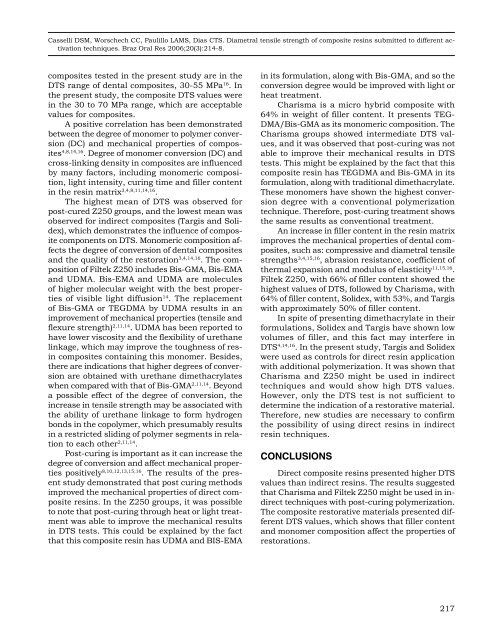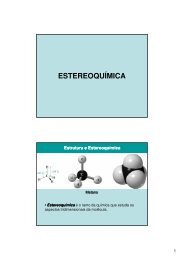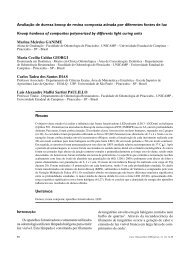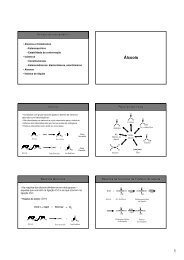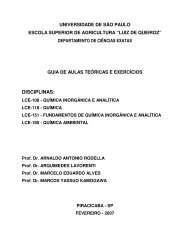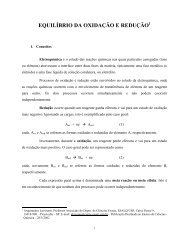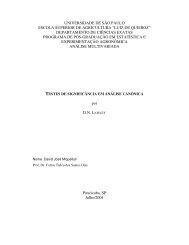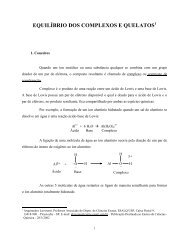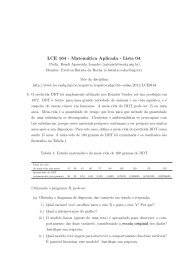Diametral tensile strength of composite resins submitted to different ...
Diametral tensile strength of composite resins submitted to different ...
Diametral tensile strength of composite resins submitted to different ...
Create successful ePaper yourself
Turn your PDF publications into a flip-book with our unique Google optimized e-Paper software.
Casselli DSM, Worschech CC, Paulillo LAMS, Dias CTS. <strong>Diametral</strong> <strong>tensile</strong> <strong>strength</strong> <strong>of</strong> <strong>composite</strong> <strong>resins</strong> <strong>submitted</strong> <strong>to</strong> <strong>different</strong> activation<br />
techniques. Braz Oral Res 2006;20(3):214-8.<br />
<strong>composite</strong>s tested in the present study are in the<br />
DTS range <strong>of</strong> dental <strong>composite</strong>s, 30-55 MPa 16 . In<br />
the present study, the <strong>composite</strong> DTS values were<br />
in the 30 <strong>to</strong> 70 MPa range, which are acceptable<br />
values for <strong>composite</strong>s.<br />
A positive correlation has been demonstrated<br />
between the degree <strong>of</strong> monomer <strong>to</strong> polymer conversion<br />
(DC) and mechanical properties <strong>of</strong> <strong>composite</strong>s<br />
4,8,14,16 . Degree <strong>of</strong> monomer conversion (DC) and<br />
cross-linking density in <strong>composite</strong>s are influenced<br />
by many fac<strong>to</strong>rs, including monomeric composition,<br />
light intensity, curing time and filler content<br />
in the resin matrix 3,4,8,11,14,16 .<br />
The highest mean <strong>of</strong> DTS was observed for<br />
post-cured Z250 groups, and the lowest mean was<br />
observed for indirect <strong>composite</strong>s (Targis and Solidex),<br />
which demonstrates the influence <strong>of</strong> <strong>composite</strong><br />
components on DTS. Monomeric composition affects<br />
the degree <strong>of</strong> conversion <strong>of</strong> dental <strong>composite</strong>s<br />
and the quality <strong>of</strong> the res<strong>to</strong>ration 3,4,14,16 . The composition<br />
<strong>of</strong> Filtek Z250 includes Bis-GMA, Bis-EMA<br />
and UDMA. Bis-EMA and UDMA are molecules<br />
<strong>of</strong> higher molecular weight with the best properties<br />
<strong>of</strong> visible light diffusion 14 . The replacement<br />
<strong>of</strong> Bis-GMA or TEGDMA by UDMA results in an<br />
improvement <strong>of</strong> mechanical properties (<strong>tensile</strong> and<br />
flexure <strong>strength</strong>) 2,11,14 . UDMA has been reported <strong>to</strong><br />
have lower viscosity and the flexibility <strong>of</strong> urethane<br />
linkage, which may improve the <strong>to</strong>ughness <strong>of</strong> resin<br />
<strong>composite</strong>s containing this monomer. Besides,<br />
there are indications that higher degrees <strong>of</strong> conversion<br />
are obtained with urethane dimethacrylates<br />
when compared with that <strong>of</strong> Bis-GMA 2,11,14 . Beyond<br />
a possible effect <strong>of</strong> the degree <strong>of</strong> conversion, the<br />
increase in <strong>tensile</strong> <strong>strength</strong> may be associated with<br />
the ability <strong>of</strong> urethane linkage <strong>to</strong> form hydrogen<br />
bonds in the copolymer, which presumably results<br />
in a restricted sliding <strong>of</strong> polymer segments in relation<br />
<strong>to</strong> each other 2,11,14 .<br />
Post-curing is important as it can increase the<br />
degree <strong>of</strong> conversion and affect mechanical properties<br />
positively 8,10,12,13,15,16 . The results <strong>of</strong> the present<br />
study demonstrated that post curing methods<br />
improved the mechanical properties <strong>of</strong> direct <strong>composite</strong><br />
<strong>resins</strong>. In the Z250 groups, it was possible<br />
<strong>to</strong> note that post-curing through heat or light treatment<br />
was able <strong>to</strong> improve the mechanical results<br />
in DTS tests. This could be explained by the fact<br />
that this <strong>composite</strong> resin has UDMA and BIS-EMA<br />
in its formulation, along with Bis-GMA, and so the<br />
conversion degree would be improved with light or<br />
heat treatment.<br />
Charisma is a micro hybrid <strong>composite</strong> with<br />
64% in weight <strong>of</strong> filler content. It presents TEG-<br />
DMA/Bis-GMA as its monomeric composition. The<br />
Charisma groups showed intermediate DTS values,<br />
and it was observed that post-curing was not<br />
able <strong>to</strong> improve their mechanical results in DTS<br />
tests. This might be explained by the fact that this<br />
<strong>composite</strong> resin has TEGDMA and Bis-GMA in its<br />
formulation, along with traditional dimethacrylate.<br />
These monomers have shown the highest conversion<br />
degree with a conventional polymerization<br />
technique. Therefore, post-curing treatment shows<br />
the same results as conventional treatment.<br />
An increase in filler content in the resin matrix<br />
improves the mechanical properties <strong>of</strong> dental <strong>composite</strong>s,<br />
such as: compressive and diametral <strong>tensile</strong><br />
<strong>strength</strong>s 3,4,15,16 , abrasion resistance, coefficient <strong>of</strong><br />
thermal expansion and modulus <strong>of</strong> elasticity 11,15,16 .<br />
Filtek Z250, with 66% <strong>of</strong> filler content showed the<br />
highest values <strong>of</strong> DTS, followed by Charisma, with<br />
64% <strong>of</strong> filler content, Solidex, with 53%, and Targis<br />
with approximately 50% <strong>of</strong> filler content.<br />
In spite <strong>of</strong> presenting dimethacrylate in their<br />
formulations, Solidex and Targis have shown low<br />
volumes <strong>of</strong> filler, and this fact may interfere in<br />
DTS 4,14,16 . In the present study, Targis and Solidex<br />
were used as controls for direct resin application<br />
with additional polymerization. It was shown that<br />
Charisma and Z250 might be used in indirect<br />
techniques and would show high DTS values.<br />
However, only the DTS test is not sufficient <strong>to</strong><br />
determine the indication <strong>of</strong> a res<strong>to</strong>rative material.<br />
Therefore, new studies are necessary <strong>to</strong> confirm<br />
the possibility <strong>of</strong> using direct <strong>resins</strong> in indirect<br />
resin techniques.<br />
CONCLUSIONS<br />
Direct <strong>composite</strong> <strong>resins</strong> presented higher DTS<br />
values than indirect <strong>resins</strong>. The results suggested<br />
that Charisma and Filtek Z250 might be used in indirect<br />
techniques with post-curing polymerization.<br />
The <strong>composite</strong> res<strong>to</strong>rative materials presented <strong>different</strong><br />
DTS values, which shows that filler content<br />
and monomer composition affect the properties <strong>of</strong><br />
res<strong>to</strong>rations.<br />
217


